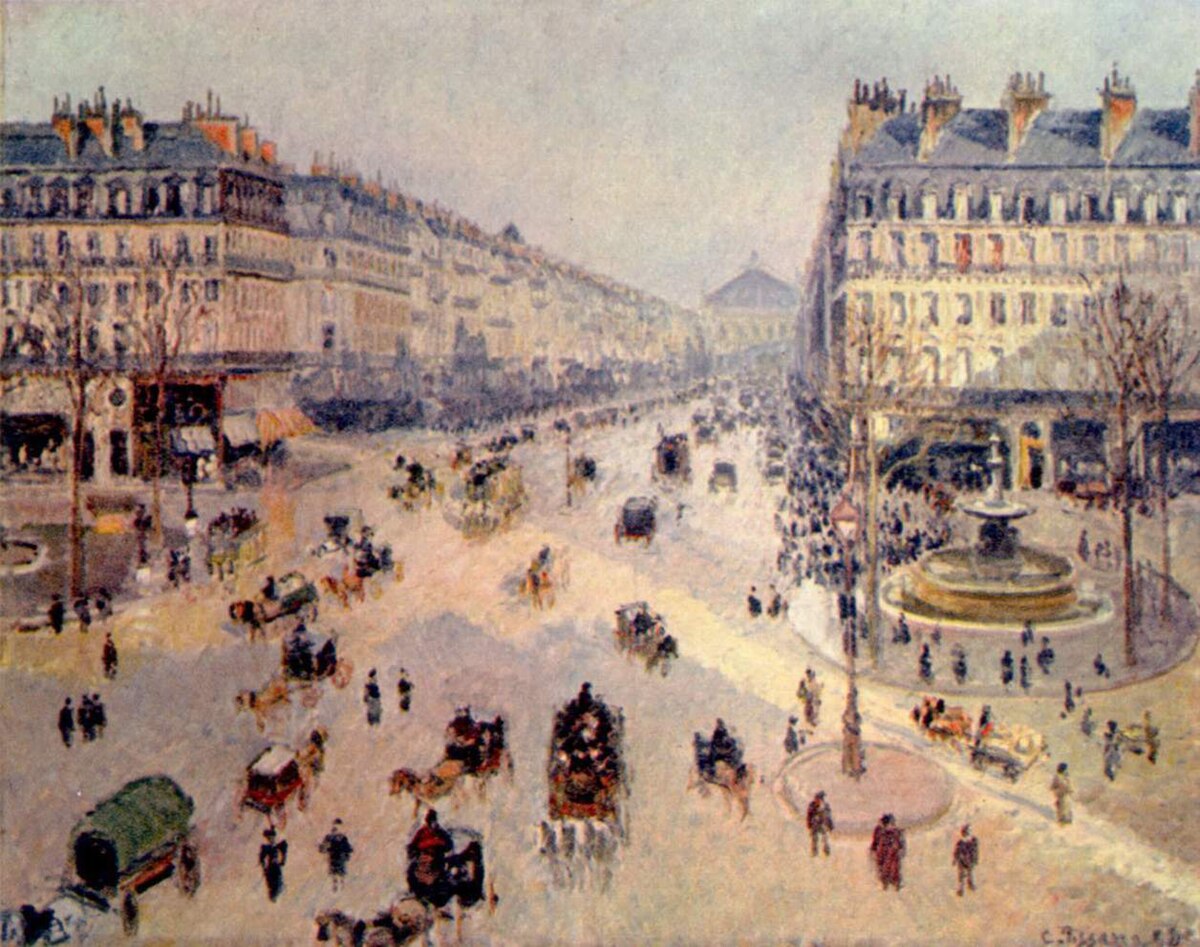
Paris during the Second Empire
Paris, FranceIn December 1848, Louis-Napoleon Bonaparte, the nephew of Napoleon I, became the first elected President of France, winning seventy-four percent of the vote. At the beginning of Napoleon's reign, Paris had a population of about one million people, most of whom lived in crowded and unhealthy conditions. A cholera epidemic in the overcrowded center in 1848 killed twenty thousand people. In 1853, Napoleon launched a gigantic public works program under the direction of his new Prefect of the Seine, Georges-Eugène Haussmann, whose purpose was to put unemployed Parisians to work and bring clean water, light and open space to the centre of the city.
Napoleon began by enlarging the city limits beyond the twelve arrondissements established in 1795. The towns around Paris had resisted becoming part of the city, fearing higher taxes; Napoleon used his new imperial power to annex them, adding eight new arrondissements to the city and bringing it to its present size. Over the next seventeen years, Napoleon and Haussmann transformed entirely the appearance of Paris. They demolished most of the old neighborhoods on the Île de la Cité, replacing them with a new Palais de Justice and prefecture of police, and rebuilding the old city hospital, the Hôtel-Dieu. They completed the extension of the Rue de Rivoli, begun by Napoleon I, and built a network of wide boulevards to connect the railway stations and neighborhoods of the city to improve traffic circulation and create open space around the city's monuments. The new boulevards also made it harder to build barricades in the neighborhoods prone to uprisings and revolutions, but, as Haussmann himself wrote, this was not the main purpose of the boulevards. Haussmann imposed strict standards on the new buildings along the new boulevards; they had to be the same height, follow the same basic design, and be faced in a creamy white stone. These standards gave central Paris the street plan and distinctive look it still retains today.
Napoleon III also wanted to give the Parisians, particularly those in the outer neighborhoods, access to green space for recreation and relaxation. He was inspired by Hyde Park in London, which he had often visited when he was in exile there. He ordered the construction of four large new parks at the four cardinal points of the compass around the city; the Bois de Boulogne to the west; the Bois de Vincennes to the east; the Parc des Buttes-Chaumont to the north; and Parc Montsouris to the south, plus many smaller parks and squares around the city, so that no neighbourhood was more than a ten-minute walk from a park.
Napoleon III and Haussmann rebuilt two major railway stations, the Gare de Lyon and the Gare du Nord, to make them monumental gateways to the city. They improved the sanitation of the city by building new sewers and water mains under the streets and built a new reservoir and aqueduct to increase the supply of fresh water. In addition, they installed tens of thousands of gaslights to illuminate the streets and monuments. They began construction of the Palais Garnier for the Paris Opera and built two new theaters at the Place du Châtelet to replace those in the old theater district of the Boulevard du Temple, known as "The Boulevard of Crime", which had been demolished to make room for the new boulevards. They completely rebuilt the central market of the city, Les Halles, built the first railway bridge over the Seine, and also built the monumental Fontaine Saint-Michel at the beginning of the new Boulevard Saint-Michel. They also redesigned the street architecture of Paris, installing new street lamps, kiosks, omnibus stops and public toilets (called "chalets of necessity"), which were specially designed by the city architect Gabriel Davioud, and which gave the Paris boulevards their distinct harmony and look.
In the late 1860s, Napoleon III decided to liberalize his regime and gave greater freedom and power to the legislature. Haussmann became the chief target of criticism in the parliament, blamed for the unorthodox ways in which he financed his projects, for amputating four hectares from the thirty hectares of the Luxembourg Gardens in order to make room for new streets, and for the general inconvenience his projects caused to Parisians for nearly two decades. In January 1870, Napoleon was forced to dismiss him. A few months later, Napoleon was drawn into the Franco-Prussian War, then defeated and captured at the Battle of Sedan of 1–2 September 1870, but the work on Haussmann's boulevards continued during the Third Republic, which was established immediately after Napoleon's defeat and abdication, until they were finally finished in 1927.
